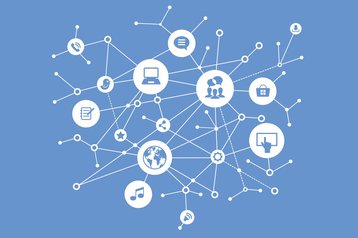"The outside world can push you into Day 2 if you won’t or can’t embrace powerful trends quickly. If you fight them, you’re probably fighting the future. Embrace them and you have a tailwind”—Jeff Bezos
When you are driving a car, do you watch the road ahead? Or the dashboard? The answer is that you watch both, of course. But you watch them in a different way.
The dashboard supplies numeric data, including historic data – how many miles you have traveled – and current data about things like your speed, fuel levels, and engine revs. All of these are useful. Some are critical, but taken for granted: few people bother with engine temperature unless a warning light flashes. But none of them are particularly relevant to the driver’s intention. The intention is typically to reach a destination, rather than “to drive at 60mph and keep the engine at the right temperature.” (Though traffic police do hope that a part of the intention is not to exceed speed limits.)
Watching the road ahead is much more closely aligned to intention. We are looking for familiar landmarks, road signs indicating where to turn off, information suggesting how many miles to go. But we are even more alert to one overarching but unannounced intention: not to crash! Any obstacle, person or vehicle is suddenly in the way and we will instinctively swerve, brake or accelerate to avoid it.
The interesting thing is that these responses are largely automatic – they happen before we even have time to think. Very different from the slower way we respond to the dashboard. “Going 55 in a 40mph zone? I’d better slow down a bit.” “Gas Low? Better keep my eyes open for a fuel station.”
Driving operations
So, how do we compare driving cars and driving business operations?
Operation teams are typically notified of performance or availability issues after they've occurred. It is important to know that last quarter was down 5% on the previous quarter, but the damage has already been done. We need visibility into what is happening now – so we drive by the dashboard, monitoring systems to ensure they're within acceptable thresholds. After over 20 years of monitoring best practices to respond to outages and events, we are biased toward reducing outages and problems, rather than having our eyes on the road ahead and actual business objectives.
Staring at dashboards, likely designed years ago under different circumstances, is not an effective way to manage and debug an operation. Dashboards introduce a passive approach to consuming data that someone decided was useful from a previous problem. We use this data to look for clues or danger signs rather than looking ahead to make sure that the network is meeting business objectives. Operators would do better to monitor the network proactively to ensure that it is meeting the business needs.
Organizations are embarking on complex initiatives that include cloud, edge, and cloud-native application deployments. As a result, operational teams have to support very complex and dynamically evolving projects. In the past, organizations added to their existing monitoring tools and processes another monitoring solution, or dashboard, for each new initiative. Typically, the vendor suggests the monitoring tools for their particular solution.
In this way the operation team builds up an ever more elaborate dashboard, relying on many different tools, while trying to make them work together – at a time when they're dealing with constrained budgets and headcount. IT operations is left scrambling to ensure the availability and performance of new as well as legacy applications and services.
According to Jeff Bezos’ “Day 2” philosophy, an expanding organization tends to rely increasingly on process rather than results. When process becomes the norm, companies stop looking at outcomes and only consider whether they are doing the right thing. Their eyes are on the dashboard – not the way ahead.
When to plan your operational strategy
To optimize the impact and effectiveness of ongoing “day-2” operations, we need to apply and integrate operational solutions and processes during the “day-1” planning and implementation phases of projects.
A key element of this strategy should include trimming down the burgeoning dashboard by consolidating all essential monitoring functions into a single source of truth, making it easier to correlate and contextualize their information. All the more so with the trend toward microservices-based application development. These micro-services are widely dispersed, and their scale and transient characteristics introduce further monitoring challenges. It's not feasible to track all the infrastructure interactions and dependencies discreetly. Instead, a baseline is developed during the development and deployment phases, which is used to quickly and proactively identify later anomalies.
Without a single, accessible source of truth, it becomes increasingly difficult to understand infrastructure dependencies, build greater knowledge of the infrastructure, and learn how to quickly isolate and diagnose operational events.
The implementation phase is critical in itself. It is a source of rich data needed to validate the architecture’s readiness to perform as expected, and it can lay down the baseline for subsequent operations.
Autonomous Operations – the next step
Automating the operations process empowers IT organizations to rapidly deploy complex solutions and ensure their success beyond the implementation phase.
The network produces a tremendous amount of data, including thousands of monitoring alerts. The moving parts move quickly, and the data streaming across the infrastructure is dense and convoluted. This makes it difficult for operation teams to isolate issues quickly. The complexity of a microservice-based environment, for example, introduces data overload. This makes it difficult to "connect the dots" and correlate across multiple resources and quickly isolate the issue and negating or limiting its impact on the business.
The ideal would be a solution that can query the single source of truth to interpret and analyze all pertinent data. The introduction of machine learning capability means that it can learn to contextualize and automatically identify anomalous behaviors that point to negative changes to the infrastructure. If this is done automatically, and a warning flagged before the problems occur, prompt action can be taken to resolve the issue. The meantime-to-resolution will be reduced, and re-occurrences can be avoided.
This is the objective of intent-based analytic solutions. To replace a tumult of data from multiple disparate monitoring tools with a single source of truth plus a combination of “rules based” principles plus machine learning capability to grow more intelligent and aware of the entire infrastructure over time.
The automobile industry has long understood this: today’s cars are far more complex, but their dashboards have become simpler – because so many tasks, such as balancing ignition timing and petrol/air mix, have been automated. A simple, clear dashboard allows us to keep our attention on the way ahead. And today’s cars are both faster and safer for that.
What next? Autonomous vehicles are a hot topic, and the same will be true in networking. The next step in intent based analytic networking is to automate responses to likely situations and create an autonomous network that looks after itself most of the time - allowing operators to focus on the business objectives ahead.
That, ultimately, is what “intent-based networking” is all about.


